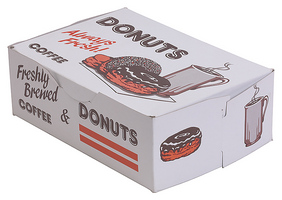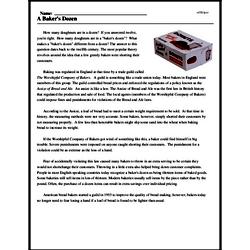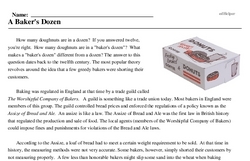A Baker's Dozen
How many doughnuts are in a dozen? If you answered twelve, you're right. How many doughnuts are in a "baker's dozen"? What makes a "baker's dozen" different from a dozen? The answer to this question dates back to the twelfth century. The most popular theory revolves around the idea that a few greedy bakers were shorting their customers.
Baking was regulated in England at that time by a trade guild called The Worshipful Company of Bakers. A guild is something like a trade union today. Most bakers in England were members of this group. The guild controlled bread prices and enforced the regulations of a policy known as the Assize of Bread and Ale. An assize is like a law. The Assize of Bread and Ale was the first law in British history that regulated the production and sale of food. The local agents (members of the Worshipful Company of Bakers) could impose fines and punishments for violations of the Bread and Ale laws.
According to the Assize, a loaf of bread had to meet a certain weight requirement to be sold. At that time in history, the measuring methods were not very accurate. Some bakers, however, simply shorted their customers by not measuring properly. A few less than honorable bakers might slip some sand into the wheat when baking bread to increase its weight.




